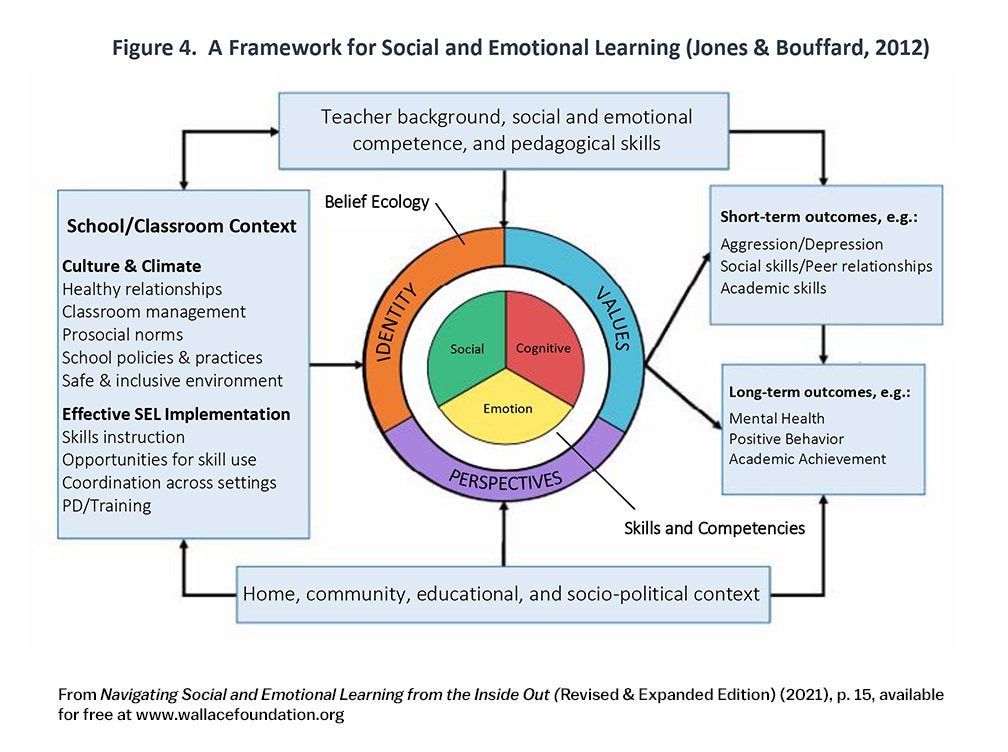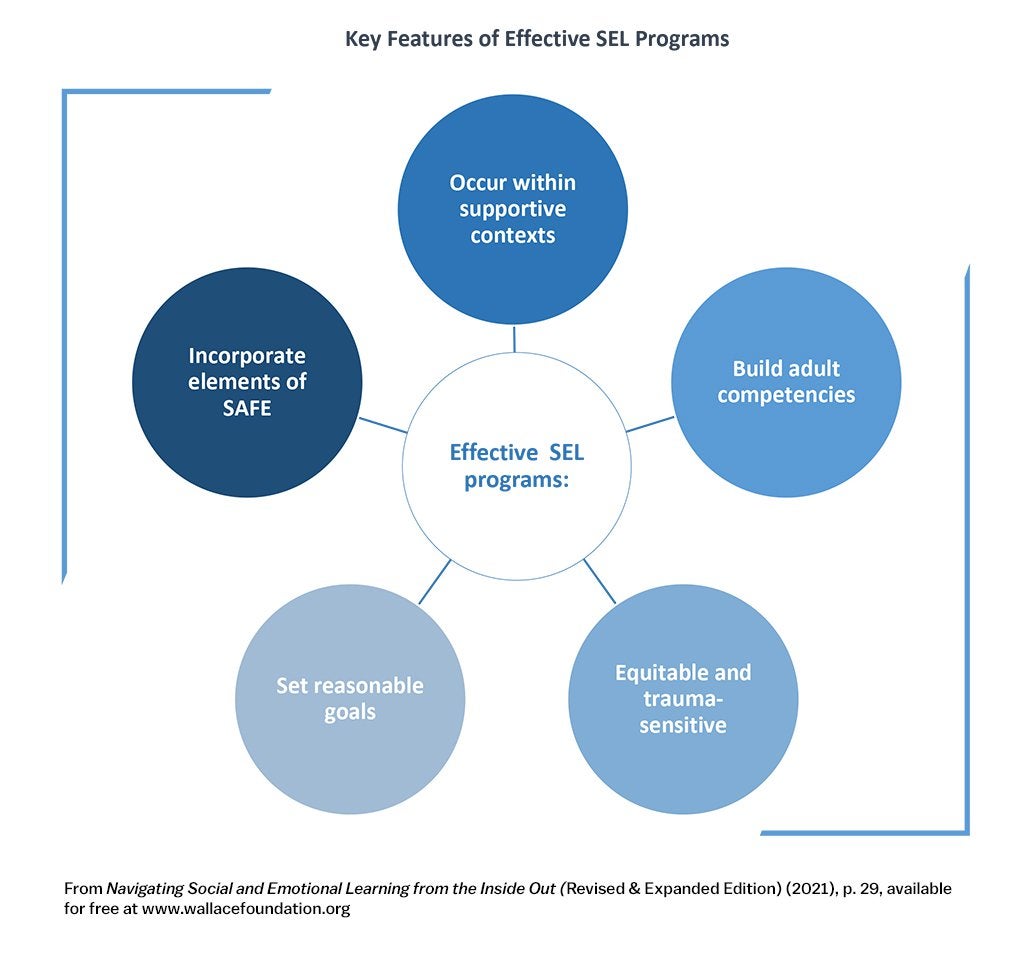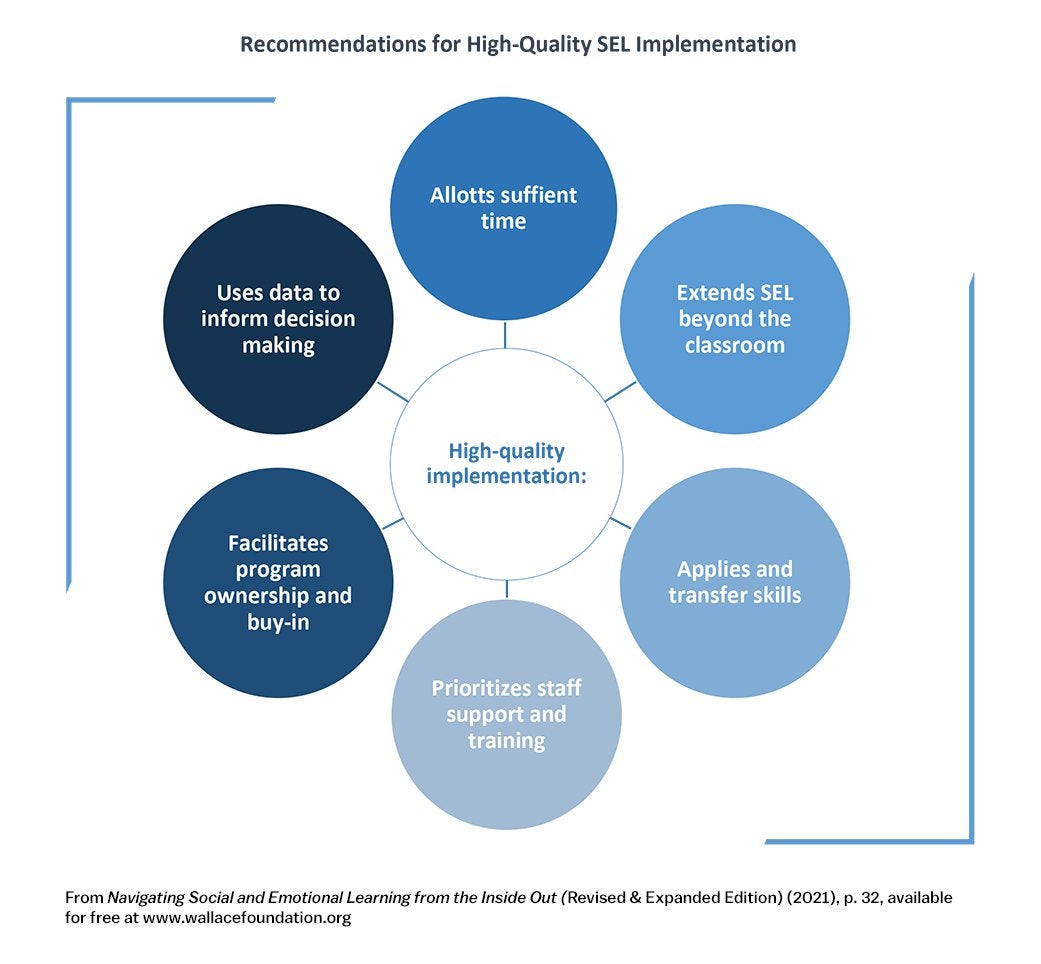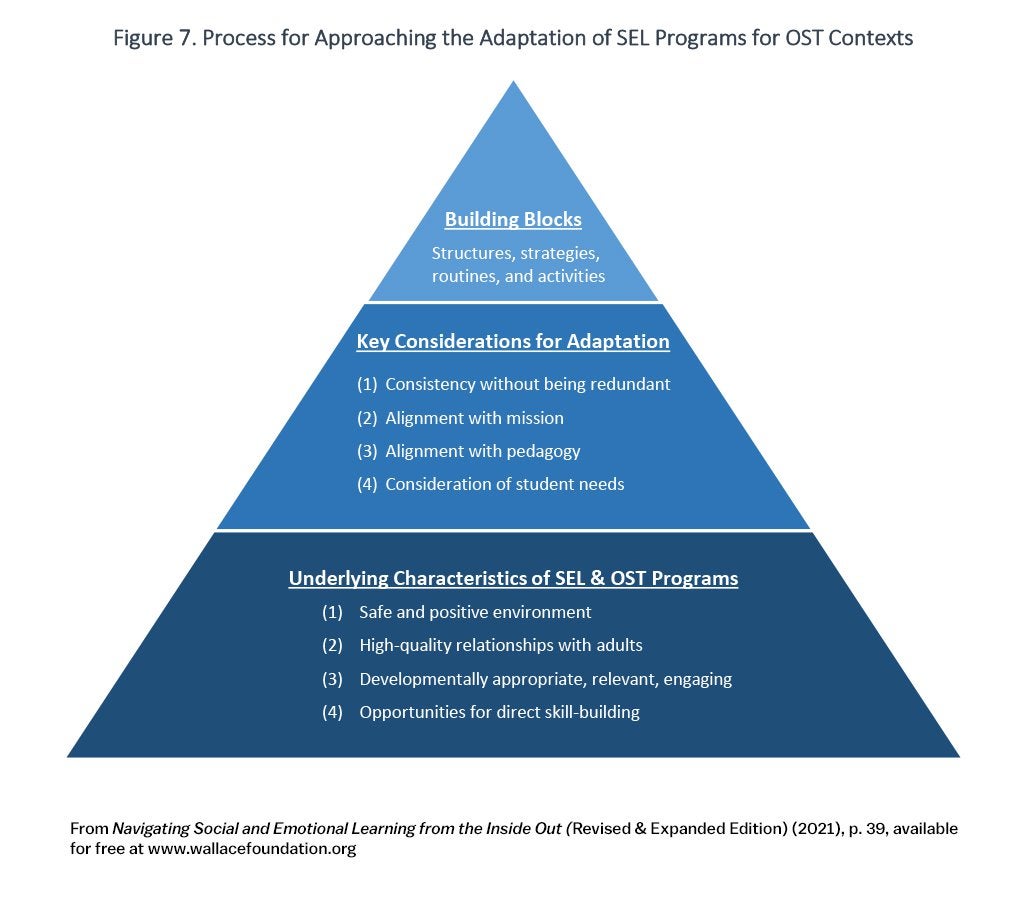
Breadcrumb
- Wallace
- Reports
- Navigating Social And Emotional ...
Navigating Social and Emotional Learning From the Inside Out

- Author(s)
- Stephanie M. Jones, Katharine E. Brush, Thelma Ramirez, Zoe Xinyi Mao, Michele Marenus, Samantha Wettje, Kristen Finney, Natasha Raisch, Nicole Podoloff, Jennifer Kahn, Sophie Barnes, Laura Stickle, Gretchen Brion-Meisels, Joseph McIntyre, Jorge Cuartas, and Rebecca Bailey
- Publisher(s)
- Harvard Graduate School of Education
Summary
How we did this
This report reflects a detailed content analysis of 33 leading SEL programs. It identifies and summarizes key features and attributes of SEL programs for preschool and elementary-age children to help schools and OST providers make informed decisions.
The field of social and emotional learning (SEL) is expanding, as educators focus more on helping children build skills beyond academics. Anti-bullying work, character education, and other SEL efforts are now an important part of school and out-of-school-time (OST) programs. Building children's SEL skills has taken on even more urgency in the wake of the COVID-19 pandemic.
This updated and expanded guide to evidence-based SEL programs offers detailed information on 33 pre-K through elementary school programs. It includes content about curriculum and program highlights. It also describes how best to foster social-emotional learning.
Practitioners from schools as well as early childhood education and OST programs can use this resource to look “inside and across” programs. That should help them to better understand SEL content. And it should aid in assessing how well programs fit with their district or community needs.
Effective SEL Programs
The authors found in their research and experience that SEL programs work best when they:
- Offer learning opportunities that are “SAFE.” That acronym refers to four principles. The programs are "sequenced," meaning each activity builds on the one before. They are "active," meaning students get a chance to practice what they’re learning. They are "focused," meaning they aim to develop specific skills. They are "explicit," meaning that those skills are named and defined.
- Take place in schools and classrooms that support healthy relationships and pro-social behavior
- Build adults’ own social and emotional competence
- Take into account students’ cultural backgrounds, identities, environments, and possible trauma
- Set reasonable short- and long-term goals
Preschool and kindergarten SEL lessons tend to focus on skills like attention and behavioral control, identifying emotions, and understanding social cues. Activities include stories, songs, puppet shows, and movement. SEL in grades 1 to 5 focuses more on ethical values, critical thinking, empathy, planning, and conflict resolution. Activities include discussions, worksheets, writing, and, in grades 4 to 5, teacher-led instruction.
A Practical Resource
The guide builds on and complements existing tools for SEL practitioners. It serves as a practical resource with profiles of each program. Profiles include the specific skills targeted and instructional methods used. Some programs, for example, help students regulate their behavior and build positive relationships. Others are aimed at developing certain mindsets or character traits.
The report can help practitioners make decisions about adopting pre-packaged programs. But it also aims to be useful to those who want to build their own curriculum.
New Chapters
This updated guide contains, among other things, new chapters offering:
- Recommendations for how to achieve equitable SEL, including common barriers and best practices
- Guidance on SEL approaches that take trauma into account
- Principles and recommendations for integrating SEL into regular practice
Key Components of the Guide
Other important elements include:
- Background information on SEL and its benefits, including key features of effective programs and common implementation challenges
- A summary of the evidence base for each of the 33 programs and detailed profiles for each of the programs
- Recommendations for adapting the programs for OST settings
- Summary tables that allow consumers to compare unique features, program components, and instructional methods
- Recommendations for achieving equitable SEL that takes trauma into account
The guide was written by Stephanie Jones, an associate professor in human development and urban education at the Harvard Graduate School of Education. Jones is a recognized expert and frequent speaker on social and emotional learning. She worked with a team of Harvard researchers.
Key Takeways
- The field of social and emotional learning (SEL) is expanding, as educators focus more on helping children build skills beyond academics.
- The updated and revised edition of this report looks at 33 SEL programs.
- It identifies and summarizes key features and attributes of SEL programs for preschool and elementary-age children to help schools and OST providers make informed decisions.
- It describes how best to foster social-emotional learning, according to research and experience.
- There are sections on equitable and trauma-based approaches to social and emotional learning.
Visualizations






